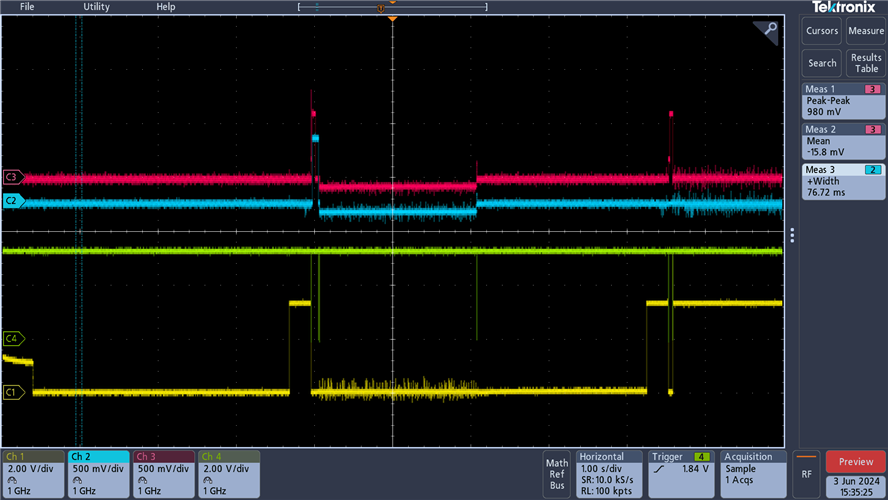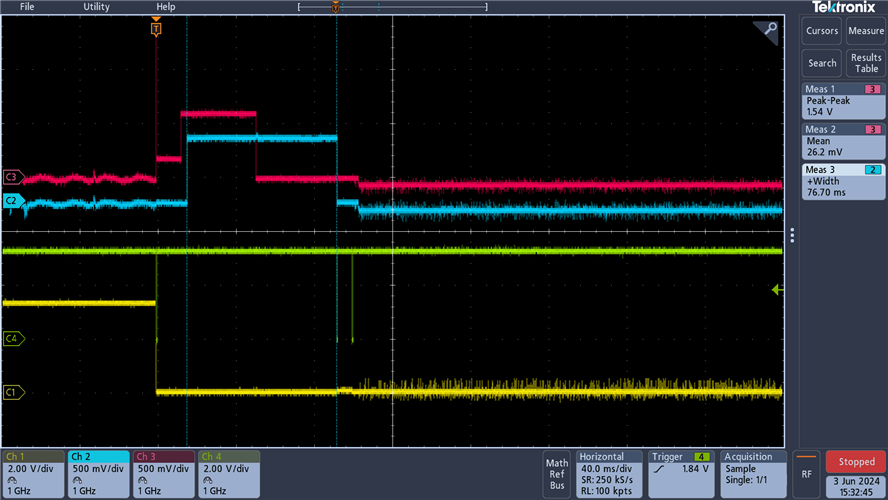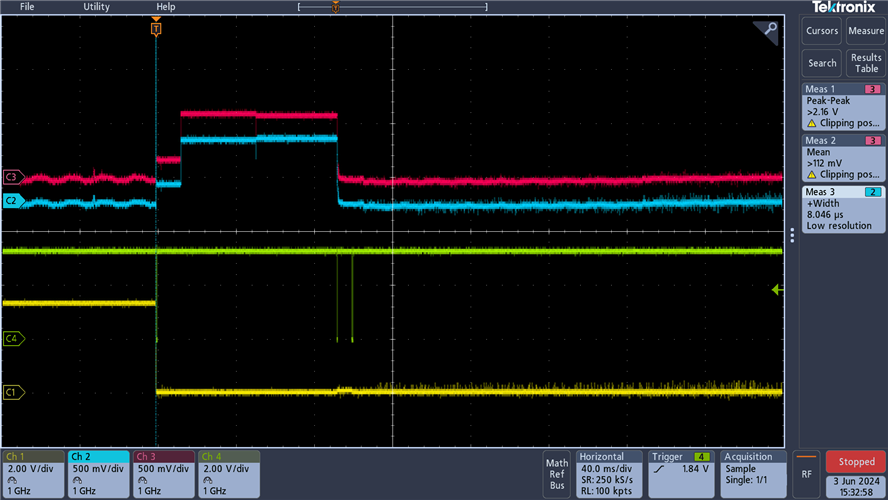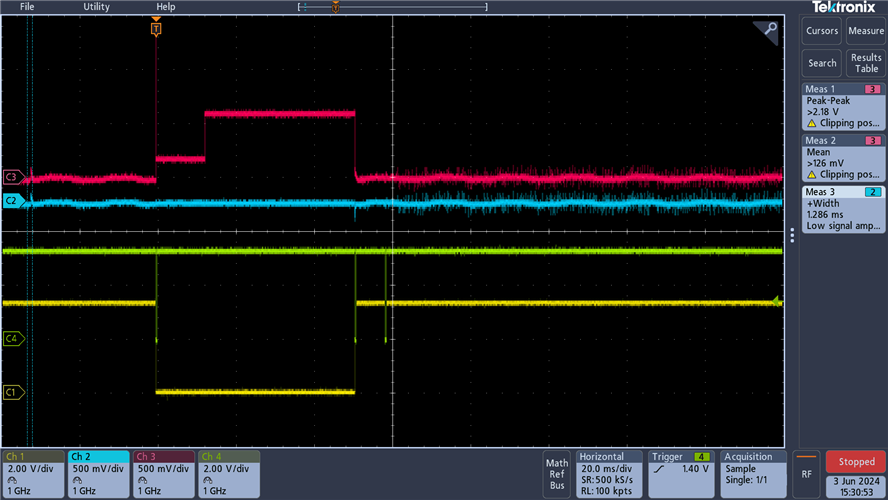Tool/software:
Dear TI experts,
My customer tests BQ25895M in their own PCB, and there is a problem of detecting input source.
They are testing with HP laptop, and some ports have a problem detecting CDP. The scenario is as below;
1. Connecting VBUS to specific USB port of laptop
2. detects CDP (DSEL pin is 0), charging starts
3. STAT pin becomes to 1 (charging stop), and check the input source again, and detects SDP (DSEL pin is 1).
4. If the charging stops, VBUS also becomes to 0V and after change to 5V.
5. As I described above, DSEL pin is 0 when CDP is detected, DSEL pin is 1 when after SDP is detected.
I attach the waveform for your convenience. RED is D+, BLUE is D-, GREEN is INT, YELLOW is DSEL.

I also attach the waveform of nomal operation
- Detectiong CDP normally

- Detecting DCP

- Detecting SDP

And customer's register setting is as below.
Reg 0x06 : 0x5E
Reg 0x00 : 0x1C
Reg 0x02 : 0x31
Reg 0x03 : 0x1A
Reg 0x05 : 0x13
Reg 0x07 : 0x8D
Reg 0x0D : 0x95
Here is the schematic. Please check it just in case.
Please check this issue, and let me know if you need more information about it. Thanks.
Best regards,
Chase

